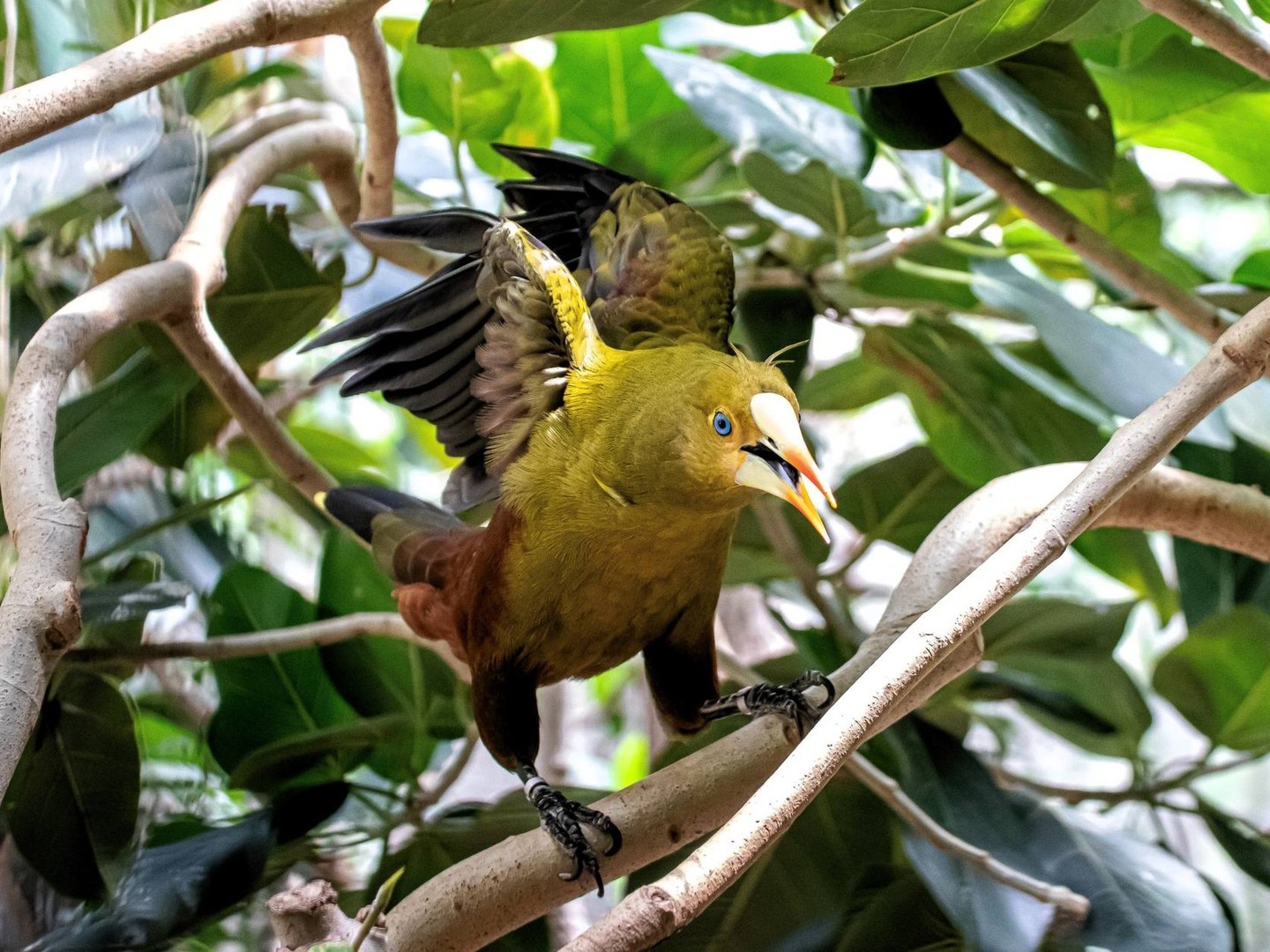- The captivating mating rituals of birds, with a focus on the oropendola.
- The significance of courtship displays in avian reproductive success.
- Diverse behavioral and environmental aspects driving unique bird displays.
- The role of conservatories in educating the public about bird behaviors.
- Conservation challenges and efforts associated with bird species.
In the realm of avian life, few activities capture the imagination quite like the intricate mating rituals of birds. These rituals vary widely across species but share the common theme of showcasing stunning visual or auditory displays by which birds attract partners. The oropendola, a striking bird known for its vibrant colors and elaborate nests, exemplifies these behaviors with a courtship spectacle that is both fascinating and informative. The oropendola’s mating dance, characterized by acrobatics and vocalizations, offers a vivid illustration of nature’s wonders and complexities.
Central to the oropendola’s courtship is a remarkable display of agility. Male oropendolas engage in an impressive maneuver, hanging upside down and swinging in mesmerizing arcs. During this display, they spread their wings, subtly flapping to catch the attention of potential mates. This physical exhibition is accompanied by a symphony of sounds, with the males singing a unique melody to their audience. The combination of visual and auditory elements increases their chances of attracting a female, making these displays crucial for reproductive success.
Such courtship displays are not merely showmanship; they serve important evolutionary functions. The vibrant colors and elaborate behaviors are signals of genetic fitness. In birds like the oropendola, these displays allow females to assess the health, strength, and genetic quality of potential partners. This ensures the continuation of robust genetic lines, contributing to the species’ survival and adaptation over time. These rituals highlight how evolution has shaped behaviors that balance attraction with survival.
The environmental context in which these birds thrive plays a significant role in shaping their behaviors. The habitats of oropendolas, often dense forests in Central and South America, offer countless auditory and visual stimuli. These environments demand unique adaptations. The birds’ displays must be loud enough to penetrate the forest’s dense vegetation and visually striking to stand out amidst the myriad forms of life. Understanding these nuances provides insights into how species evolve distinctive characteristics in response to their surroundings.
Educational facilities, such as the World of Reptiles Conservatory, play an instrumental role in increasing public understanding of these extraordinary behaviors. By maintaining habitats that replicate natural conditions, such institutions enable visitors to observe birds engaging in their natural activities. With detailed information panels and expert talks, conservatories offer invaluable resources to those interested in learning about bird behavior and ecology. These experiences foster a deeper appreciation of biodiversity and the ecological roles birds play.
Despite the wonder these rituals evoke, many bird species, including the oropendola, face pressing conservation challenges. Habitat loss, climate change, and human encroachment threaten their ecosystems, putting these beautiful displays at risk. Conservation efforts are crucial to preserving the natural habitats these species depend on for breeding and survival. Organizations worldwide are working tirelessly to protect these environments, emphasizing conservation education, research, and community involvement.
Protecting birds and their behaviors is a critical part of broader conservation strategies. By understanding and witnessing these rituals, individuals are inspired to contribute to conservation efforts. Support for habitat preservation and sustainable practices can make a significant impact on bird populations across the globe. Engaging in volunteer work, supporting conservation NGOs, and promoting awareness in local communities are just some ways to help protect these breathtaking phenomena for future generations.
In conclusion, the mating rituals of birds offer a window into the incredible complexity and beauty of wildlife. The oropendola, with its dynamic and musical courtship display, embodies the spectacular interplay between evolution, behavior, and the environment. Through comprehensive education and active conservation efforts, we can safeguard these fascinating displays, ensuring that both the species and the ecosystems in which they thrive continue to flourish.
*****
Source Description
Are you interested in the unique mating rituals of birds? Well is the perfect time to learn all about them! 🦚
As with many bird species, the oropendola puts on quite the display to win the ladies. This process involves the male swinging upside down, sometimes completing a full circle, while spreading and flapping their wings and singing to the female. In this photo you can see one of our male green oropendolas in the middle of this display.
It may be cold outside but our World of Reptiles Conservatory is always warm and provides you the opportunity to learn more about our fascinating feathered friends! 🪶
📸 Eileen Murphy McCallum

